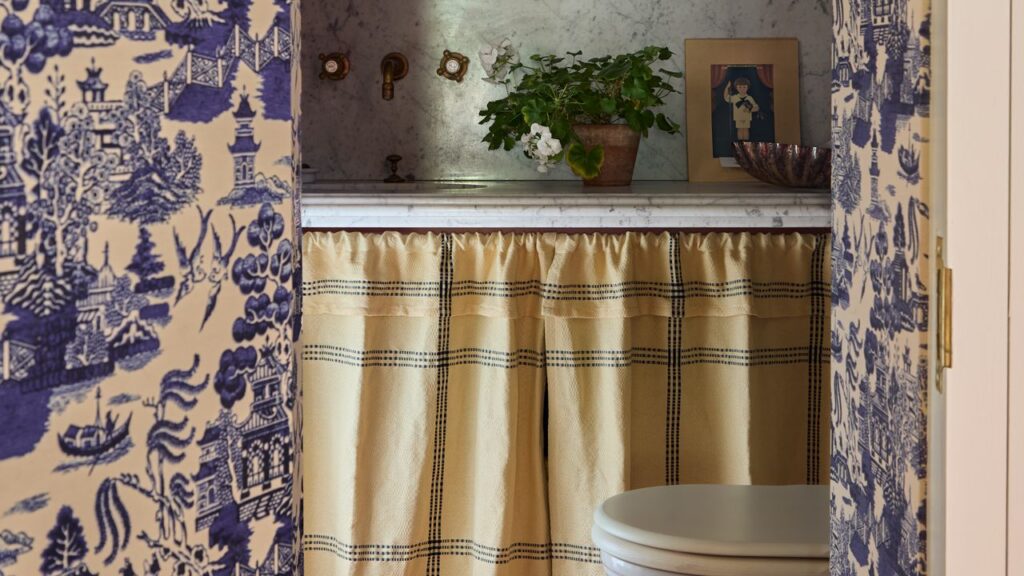Curtained storage solutions—the opposite of the cold, stainless steel shelving that has dominated interiors recently—can also offer a symbolic partition in multiuse spaces. Riffmade founders Stephanie Betesh and Nicholas Steigmann launched a line of renter-friendly furnishings with built-in, customizable drapes last year at Afternoon Light’s design fair Shelter, including a desk you can stage a curtain call for when the work day is over.
“One of the main things that started it all was being able to shut off at the end of the day and signal to your environment and also to yourself that you’re in a new mode, [one of] unwinding and resting,” Steigmann says of the brand’s curtain desk. “Nick will come over and close the curtain and be like, ‘Time to stop working,’” Betesh adds.
In our most private spaces, little sheer curtains can also create a peekaboo effect. Last year, Germany-based designer Hannah Kuhlmann debuted a dreamy aluminum nightstand topped with a pale blue curtain. To her, the embellishment is revealing, but not overly so: “In Lily of the Valley, the curtain is slightly transparent, so it separates yet still reveals. It creates a small, intimate place where personal things can be kept,” Kuhlmann says.
In other cases, the act of opening and closing these curtains symbolizes routine. Brooklyn-based architect and artist Liyang Zhang, who makes ceramic and metal sconces outfitted with diminutive drapes, says her work is informed by daily household rituals. This project explores light piercing the window of a home and how “the act of drawing a curtain [is] a reaction to the changing environment and the time and the weather.”
Plus, they’re practical. The curtains on her sconces not only obscure the strip of LEDs at the back and trigger the dimmer switch for this light, but they also lend nuance and softness (plus, a whole lot of charm) to surrounding spaces. “The texture of paper and fabric is such a good material to add to a home that’s hard and sterile,” Zhang says.




